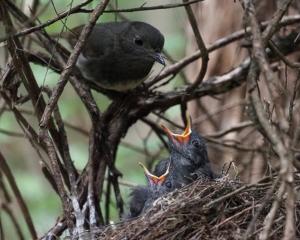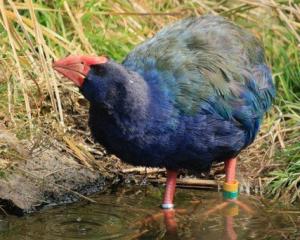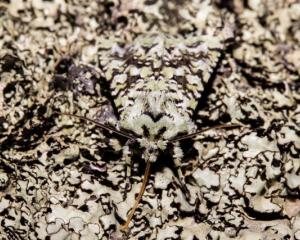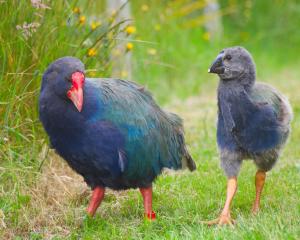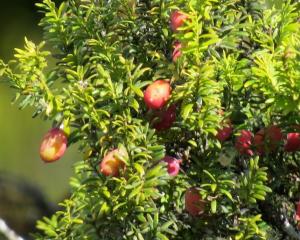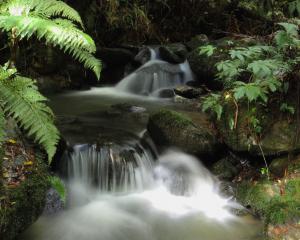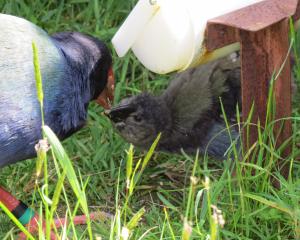Orokonui Ecosanctuary's conservation manager, Elton Smith, recently oversaw the transfer of 50 South Island saddlebacks, a threatened species, from an island in deepest, darkest Fiordland.
Dawn, September 2, 2013. Ten conservation specialists are assembled in Manapouri.
They comprise a local Otago Doc worker, three Te Anau and Stewart Island Doc veterans, two Otago zoologists (including a hunter-gatherer Frenchman), the skipper and crewman of Doc vessel Southern Winds, a Hawaiian expert bird handler and the most nervously excited member of all - the project manager from the Orokonui Ecosanctuary.
They have assembled to conduct a saddleback hunt. The goal is to capture and then transfer 50 South Island saddlebacks/tieke from Breaksea Island and establish the first colony of this species on the New Zealand mainland for 130 years.
This is a hunt of a different ilk: aiming not to take a life but seed new life. Bird transfers require a certain military approach.
Documentation is needed, as is specialised transport, and good communications are essential.
Maps are pored over and weather forecasts agonisingly, almost ritualistically, listened to: the fate of the entire trip can rely on the weather gods doing their bit. Plans are hatched, deployments made.
Then D-day is upon us!The weather forecast for the week is average to say the least, but this is wild Fiordland after all.
Day one starts well: all equipment and personnel are successfully transferred to the awaiting Southern Winds in Doubtful Sound and the team arrives at the final destination around lunchtime. Then it's action stations.
One team is dropped off to spend the afternoon repairing the ageing aviary: you do have to be multi-skilled for this sort of operation.
Two capturing teams go forth to start the hunt. In this case fine mist nets replace rifles and audio gear is used to bait the traps.
By the end of the day, five birds are in the aviary, a good start but a long way from the finish line.
Day two is the sort of day to make the most of in Fiordland: little wind and no rain. At dawn the work begins again.
Four two-person teams are dropped off by the crewman from the dinghy around the island in known saddleback hot spots. One team has been delegated to look after the captive birds as well as catch more.
Grapes, oranges and mealworms are the favourite foods of a captured saddleback.
The aviary itself acts as a biological lure and throughout the day eight birds are drawn into the three nets strategically placed around the structure.
Meanwhile the A-team has hit pay dirt - 11 birds have been caught and one of the other teams also has a bird. By dusk the tally has hit a respectable 25 - halfway.
Day three is not the best of days weather-wise. A gale force souwester means that most of the island cannot be accessed due to large swells.
However, the stakes are high, so all four capture teams give it a go. Ten hours later another eight birds are in hand, a fantastic result all things considered.
Day four is another day in paradise. The goal is 17 birds. Friday's forecast is terrible so it is now or never. By 3.30pm the quota of 50 has been reached. Time to mildly celebrate.
A howling norwest gale greets us on day five, meaning a helicopter cannot land on the island so a nearby sheltered fiord becomes the fall-back position.
Still, there is work to be done; 50 birds need a last-minute feed of worms and then each bird in the aviary has to be caught, tucked snugly in a transfer box, the box carried to the dinghy then on to Southern Winds and finally to the waiting helicopter, piloted by Richard (Hannibal) Hayes.
In a mere 90 minutes, the precious cargo has been transferred from the aviary, flown over the Southern Alps and to beautiful coastal Otago and their new home in the forested Orokonui Valley.
A media scrum awaits both hunters and birds. There are speeches and interviews then our seeds are
sown.
All 50 birds have survived the trip well and now it is up to them, this precious seed, to take root.



